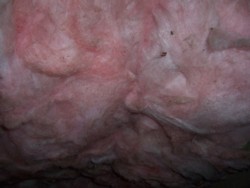 One of the things I hear a lot in my new position is that people want to build their new homes energy efficiently but think that they cannot afford to. Whenever I hear this I always say without hesitation “You can’t afford NOT to build you home energy efficiently!”. There are huge misconceptions out there about the costs, methods and effectiveness of building new homes efficiently. Most new home builders do not help the situation and will tell prospective customers that adding more insulation to their house, installing a geothermal or solar heating system or building to take advantage of passive solar gains will add an unreasonable amount of cost and time delay to the building process.
One of the things I hear a lot in my new position is that people want to build their new homes energy efficiently but think that they cannot afford to. Whenever I hear this I always say without hesitation “You can’t afford NOT to build you home energy efficiently!”. There are huge misconceptions out there about the costs, methods and effectiveness of building new homes efficiently. Most new home builders do not help the situation and will tell prospective customers that adding more insulation to their house, installing a geothermal or solar heating system or building to take advantage of passive solar gains will add an unreasonable amount of cost and time delay to the building process.
Fortunately there are free resources out there for anyone to dispel these myths. A free software package from Natural Resources Canada (NRCan) can be downloaded called HOT2000 and it allows anyone to do energy modeling on their home and actually forecast what various changes will do to the energy consumption of there homes! It has a fairly shallow learning curve, with a windows interface, drop down menus and check boxes, and comes with a good help file and example files to build on.
Based on three common home plans (a 1600sf rancher, a 2400sf two story executive and a 1500sf split entry) I modelled what the difference was in energy consumption between standard construction (2×6 walls w/ fibreglass batts, blown-in attic insulation to 9″ and uninsulated basements) and minimal energy efficient upgrades (addition 1-1/2″ rigid foam to walls, 5 more inches of attic insulation and 2″ rigid foam to foundation walls and slabs) and found that in almost all cases the additional costs of the upgrades to the mortgage payment was offset by almost double in monthly energy savings! The bottom line was the cost of ownership (mortgage AND energy bills) was always lower with the energy efficient home over the standard construction home. It broke down like this:
2 Story executive style home:
$1355 in energy savings per year or $112 per month
$6983 added to mortgage or $45 per month
1 Story ranch style home:
$1327 in energy savings per year or $110 per month
$8110 added to mortgage or $52 per month
Split entry home:
$700 in energy savings per year or $58 per month
$6875 added to mortgage or $45 per month
*savings are using Hot2000 with PEI energy costs per April 1, 2008; mortgage costs are estimates.
This makes sense intuitively as split entries are fundamentally a more efficient style home and thus the savings, while still worth while, aren’t as great as the bigger less efficient plans. I also ran the numbers using a standard slab on grade (outside perimeter of slab only insulated) for the rancher and executive homes and going to a fully insulated slab on grade and the savings are still substantial. We are in the process of running numbers on the costs and savings of super insulated buildings and on alternative forms of building but the message seems to be consistant:
INSULATION IS ONE OF THE BEST METHOD OF SAVING ENERGY!!!
Related and perhaps more important is the correlation between home size and energy costs. For every cubic foot you reduce the size of your home you lower your mortgage AND reduce you energy costs!
These savings are all BEFORE you look at heating/cooling/ventilation equipment. It’s important to eliminate the waste before looking at efficiency of equipment. If you can make your home as well insulated and tight as possible you may be able to go with a smaller capacity heating system which adds another level of energy savings to the mix before you even look at the efficiency rating!
If you are building a new home soon or are considering renovationg your existing home to make it more efficient, I hope you consider insulation home size as much or more than efficient appliances and equipment, it really is the right place to start.
Read more tips at greenspree.ca or http://thesietch.org/mysietch/greenspree
My goal this summer is to actually replace the windows in our home. I figure since there is probably no chance in hell that we could actually sell the house, let alone make any money on it. I better start investing into the house in terms of efficiency.
I hope to be able to replace all the windows by the end of the summer. After that I plan on putting more insulation into the attic. Was thinking more insulation and some of that heat reflective material to put up against the roof itself in the attic also.